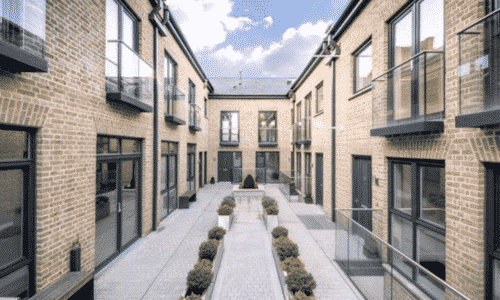Whether a salesperson for a window company or a consumer looking to buy new windows, it is important to understand the difference between external and internal beaded windows, the strip that holds the glass panel in place in the frame.
This article explains the main differences between internal and external beaded windows and how the glass is secured into the frame.
Externally beaded windows versus internally beaded windows
One of the most common features of aluminium windows sold for the home is that most are externally beaded. Of course, internally beaded windows are also possible, but if an explanation is required of the differences, how can this best be answered?
Many PVCu-only window salespeople try to convince their customers that externally beaded windows are less secure than internally beaded ones. Considering that your average customer knows very little about how windows are made secure in their design, production, and installation, it is easy for them to believe what they are being told. This reasoning historically came about because the early generation PVCu windows were all externally beaded; however, the weakness of a thin plastic bead became apparent, and PVCu windows were changed to internal beading.
The obvious evidence in favour of internally beaded windows is that because the window beading is inside the building, this must make the window more secure because the bead cannot be removed from the outside without breaking the frame or glass.
What is the advantages of externally beaded windows?
Externally beaded windows can technically be perceived as having advantages over internally beaded windows.
Some professionals say that externally beaded windows are less prone to leaks through the beads because the glass sits against an upstand on an externally beaded window. Therefore, any water entering the window has to rise over a (typically 19mm or more) upstand, and this would mean a considerable amount of water to do this.
Whilst this advantage is possible, it is on the proviso that the weather testing against air, wind and water to a recognised standard has been done and certified.

What is the advantage of internally beaded windows?
Internally beaded windows, having the advantage of the window beading on the inside, do not give a burglar the “obvious” method of prising off the beading to gain entry without smashing the glass.
However, the absence of an upstand gives no rebate for the glass to sit against like an externally beaded window, and some may perceive this as a disadvantage.
A further argument is that internally beaded windows with large panes of glass and the absence of a rebate are more prone to leaking because when the glass deflects, it only has the beads to press against, not a solid frame rebate. The accuracy of this is open to interpretation, but it is feasible.
How internally and externally beaded windows are glazed
In most types of PVCu and aluminium windows, glass fittings comprise several components. These are:
The glass packers. These plastic blocks sit between the glass and the inner frame to ensure the glass is positioned plumb and square. Glass packers further ensure any opening vents are square and do not bind on the corners.
The glass. This is self-explanatory, where windows are fitted with glass, but the same applies if glazed with a pane.
The retained gasket. The retained gasket is typically fitted before the glass is lifted into position. It serves several uses (such as weather sealing), the foremost being giving a buffer for the glass to sit against so it does not make direct contact with the plastic or aluminium frame.
The glazing bead. Clipped into the window once the above components are all in place.
The wedge gasket. The wedge gasket is the final component to be fitted when the window is glazed. Apart from working to seal the window, the wedge gasket acts as the internal or external buffer to stop the glass from touching the frame.
All these components are important because they all play a part in keeping a beaded window weather-resistant and secure.
The retained gasket is slid into a groove that keeps it in place during manufacture or before glazing. This cannot be removed without the glass being removed first.
The wedge gasket also plays a considerable part in locking the window beads into place. The windows are secure once pushed into the gap between the glass and the window frame.
The wedge gasket is never placed outside of a window because once this is removed the “glazing procedure” can effectively be reversed and enable the glass to be removed.

Is there really any difference between internally and externally beaded windows?
It is important to note that quality modern window system, whether PVCu or aluminium, have been tested to recognised industry standards. Whether British or European, they have undergone the necessary tests to achieve Secured by Design, BS6375 or any other standard to do with the security of windows.
By virtue of this testing, the easiest and best way to overcome the external beaded window issue is to refer to whatever security testing the windows have undergone. It really is that simple. It is also worth noting that insurance companies do not presently favour one type of window over another.
Many window websites talk about their products being internally beaded “for security”, but we hope this article has given some balance to the questions surrounding window beading. Here is some further reading about how safe externally beaded windows are.
Aesthetics play a big part in choosing a window, and externally beaded windows may look more attractive than internally beaded ones from the outside and vice versa when viewed from the inside.
If you are an installer and would like some help choosing new window systems to sell or a customer after some advice on which window system to purchase, please get in touch.






